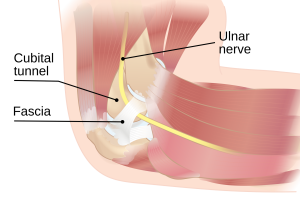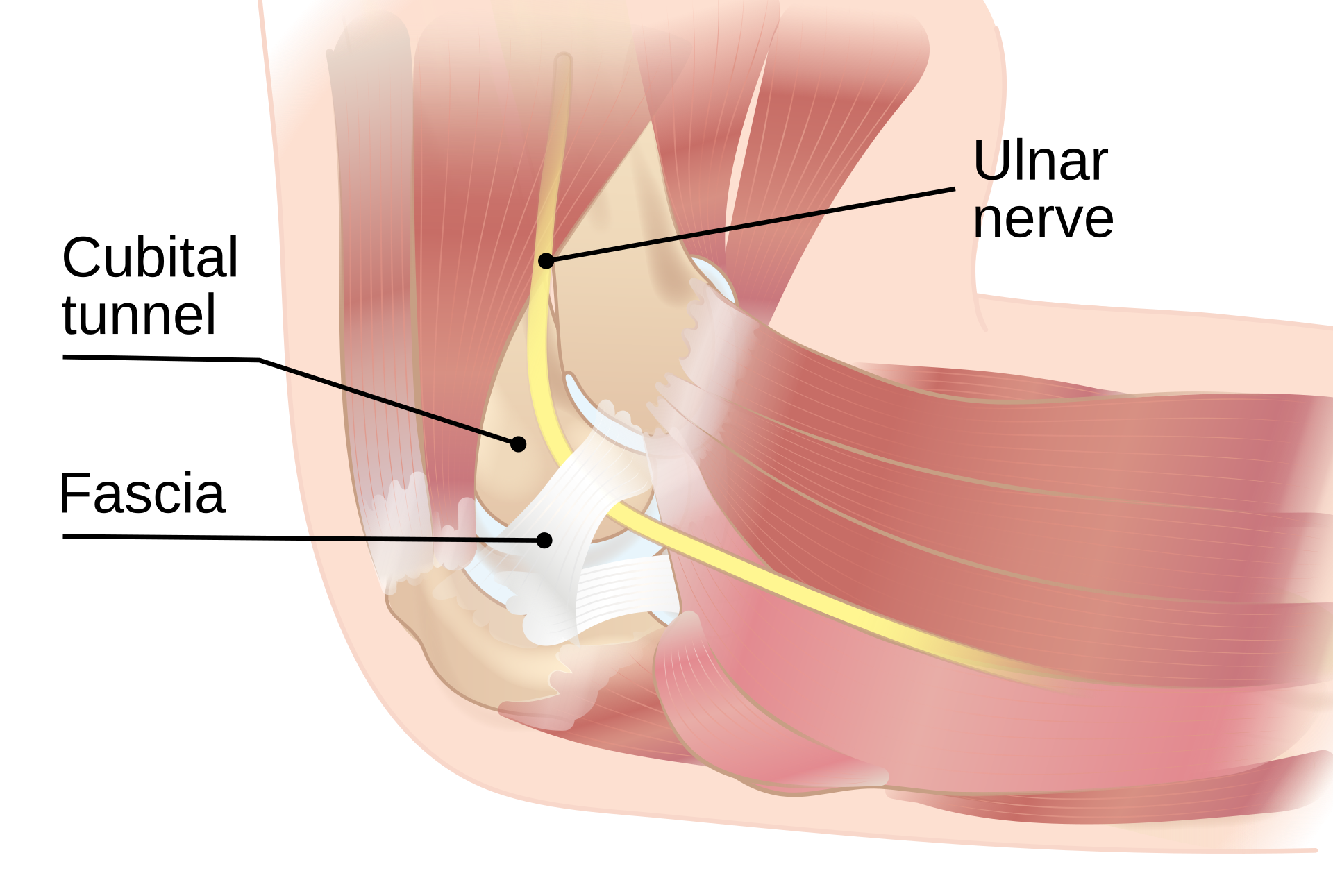Cubital Tunnel Syndrome
 Did you know that your funny bone isn’t a bone? It’s the ulnar nerve. The largest nerve in the body that is not protected by muscle or bone, which is why it is so prone to injury and irritation in the cubital tunnel.
Did you know that your funny bone isn’t a bone? It’s the ulnar nerve. The largest nerve in the body that is not protected by muscle or bone, which is why it is so prone to injury and irritation in the cubital tunnel.
Cubital tunnel syndrome is the second most common peripheral neuropathy of the upper limb, following carpal tunnel syndrome, affecting approximately one in every six adults (Assmus, Antoniadis, & Bischoff, 2015). While carpal tunnel is the irritation or compression of the median nerve at the wrist, cubital tunnel affects the ulnar nerve at the elbow.
Physiotherapy is a non-invasive approach to treating cubital tunnel syndrome and is essential for maintaining or improving patients’ quality of life. This is done using different modalities for pain management, strength and conditioning to restore function and improve grip strength, and range of motion exercise to improve flexibility. Additionally, for those that require surgery, physiotherapy can be used for post-surgical rehabilitation to restore strength, flexibility and function.
How the Injury Occurs
Cubital Tunnel Syndrome is a condition caused by the compression or irritation of the ulnar nerve, which runs along the inside of the elbow. Compression or irritation of this nerve can alter sensations in the ring and little finger, and negatively impact muscle control in the hand. The main causes of cubital tunnel syndrome are:
- Injury – a direct hit to the inner elbow
- Repetitive movements – bending and straightening the elbow, leaning on the elbow and bending the elbow for extended periods of time
- Health conditions – arthritis or diabetes
- Social history – sports or jobs with repetitive arm movements
- Personal habits – sleeping with bent elbows or frequently leaning on elbows
Signs and symptoms to look out for
- Numbness and tingling in the ring finger and little finger, especially when the elbow is bent
- Pain on the inside of the elbow that may extend into the forearm and hand
- Weakness in the hand and difficulty gripping objects, especially pinching objects between the thumb and index finger
- Clumsiness such as dropping objects more often
- Worsening symptoms at night
- Muscle wastage in the hand
- In severe cases, the ring and little fingers can bend into a claw shape
Seeking therapy as soon as possible is highly important to preserve strength and fine motor skills, prevent muscle wastage and manage pain. When assessing cubital tunnel syndrome, your therapist will carry out a clinical assessment, including the following:
- Detailed history – current injury symptoms, previous injury, medical and social
- Physical examination – postural assessment, visual observation, palpation, range of motion, strength testing and nerve testing
- Functional testing – grip and pinch strength and fine motor.
The therapist will also provide you with a personalised rehabilitation plan. This will include soft tissue therapy, manual therapy, pain management education, strength and conditioning exercises.
Tips for Managing Symptoms
- Avoid leaning on your elbows
- Keep your elbows straight when possible
- Use ergonomic tools and set up at work
- Take frequent breaks if your job/activities involve repetitive arm movements
Conclusion
Cubital tunnel syndrome is the second most common peripheral neuropathy of the upper limb, affecting about one in six adults. It is caused by the compression or irritation of the ulnar nerve, which runs along the inside of the elbow. It can alter sensation in the ring and little fingers and impair muscle control in the hand.
Main causes include injury, repetitive movements, health conditions, social history and personal habits.
Physiotherapy is a non-invasive treatment that improves patients’ quality of life through pain management, strength and conditioning, and range of motion exercises. It is also crucial for post-surgical rehabilitation, aiding in the restoration of strength, flexibility, and function.

Eve is a qualified sports therapist at MacFarlane Physiotherapy.

